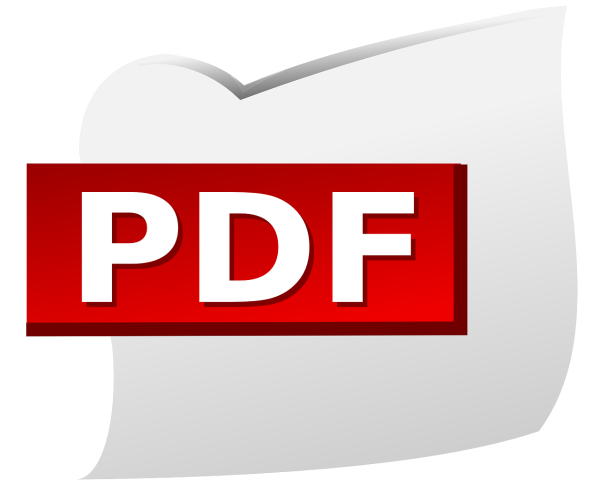Locking PDF files to prevent theft
If you don’t want anyone to steal or add to the classified contents in your PDF files then you need to adequately protect them. There are several reasons why you need to make sure that sensitive data in PDF files is protected. But at the same time, since the PDF format is a commonly shared document, it must be easily accessible to your users or those who read and review them. In the absence of PDF file security, you may be faced with severe consequences of a data breach. Hence, locking PDF files with right document security solution can effectively keep sensitive information within the files secured.
The problem with passwords
The ease at which PDF files can be shared and viewed makes it a popular format for most organizations. However, the PDF format also comes with inbuilt levels of security, such as password protection, to render its efficacy while sharing. Unfortunately, passwords can be easily cracked with a simple password remover found on the Internet for free. This makes PDF files — with password protection or without — completely ineffective.
Perhaps you are using PDF files for personal usage, or you are an employee that needs to send secured PDF files to clients or customers. Unfortunately, even if you have followed the standard protocol of protecting these documents through password protection, unintended users can use easy hacks to overcome this little obstacle. Besides, even if you ensure that the file contains stringent password protection and encryption, there are several instances of how password protected PDF files have been stolen, misused, misplaced or intercepted in transit.
For example, the trusted party sharing your PDF files could have malware that could compromise their system. Similarly, if the intended user is a victim of a phishing attack, your PDF file could be compromised. In addition, online miscreants could intercept your PDF files in transit, making the sensitive information available in your PDF file available to those who receive it. All these factors make your PDF files extremely susceptible to theft.
Why passwords do not offer security
Adobe first introduced password controls in PDF documents. In addition, Adobe Acrobat also allows for the essential protection of PDF files such as:
- Allowing or disallowing the copying of document text.
- Allowing or disallowing printing.
- Allowing or disallowing the change of documents.
- Requiring passwords to open documents.
Unfortunately, since using passwords is the main level of security that Adobe allows on its PDF files, and given the ease at which passwords can be hacked into, passwords can no longer be relied upon as a document security solution. That's because password protection is static security, which means, after you've chosen password protection and distributed the file, the security cannot be changed for those files that have already been distributed. For instance, if you have distributed a PDF file to a particular customer in January and your relationship with the customer has changed in February, you can no longer disallow access to the file sent to them previously. Hence, there is no ability to change access permissions with static protection as they have already been set.
Password protection is one of the most easily bypassed and cracked security controls. Despite 128-bit encryption and 256-bit, all PDF files that rely on a password-based solution are insecure. That's because your PDF file is only restrained with a string of letters or alphabets that can be guessed through automated password-cracking software.
And even if password protection prevents copying text within the PDF file (although that control can be easily removed), a user can easily copy the entire file and redistribute it to others. So even if you have set a password to access the PDF document, the intended user can easily share the password around to unintended users to access, modify, delete or alter the contents in the document. Hence, you can no longer use password protection as a level of security given its easy circumvention. If the contents of your PDF file matter to you, you must secure it with the right document security solution — digital rights management.
DRM: third-party secure protection system
PDF DRM offers you real-time control over your PDF files. That means you can change or alter the security even after it has been delivered to your intended users. In addition, it provides you with the highest level of protection for your PDF files and can:
- Prevent the saving of the PDF file as an unprotected copy.
- Prevent distribution of the PDF file.
- Prevent exporting or extracting content or pages from the document.
- Prevent unlimited or uncontrolled access to the PDF file.
- Add dynamic and permanent watermarking to identify users.
- Automatically expire content, and much more….
Instead of using easily bypassed password systems, the right PDF DRM system restricts your PDF files from unintended use securely. The right DRM solution encrypts your PDF files with strong US government strength 256-bit AES encryption ensuring that only an intended user can access your protected PDFs through its secure viewer application and license-based security.
Conclusion
A robust PDF DRM solution empowers the security of your document through its wide range of powerful protection controls that no other security solution can. From limiting the printing of your PDF document to blocking screenshots and securely locking your PDF file from copying, pasting and printing. You can also track and lock your PDF files to specific devices, locations and IP addresses. In addition, a PDF DRM system allows you to expire the document at any time during its lifecycle. Given its robust security benefits, PDF DRM has become the only proven route of locking PDF documents securely against theft and misuse.

